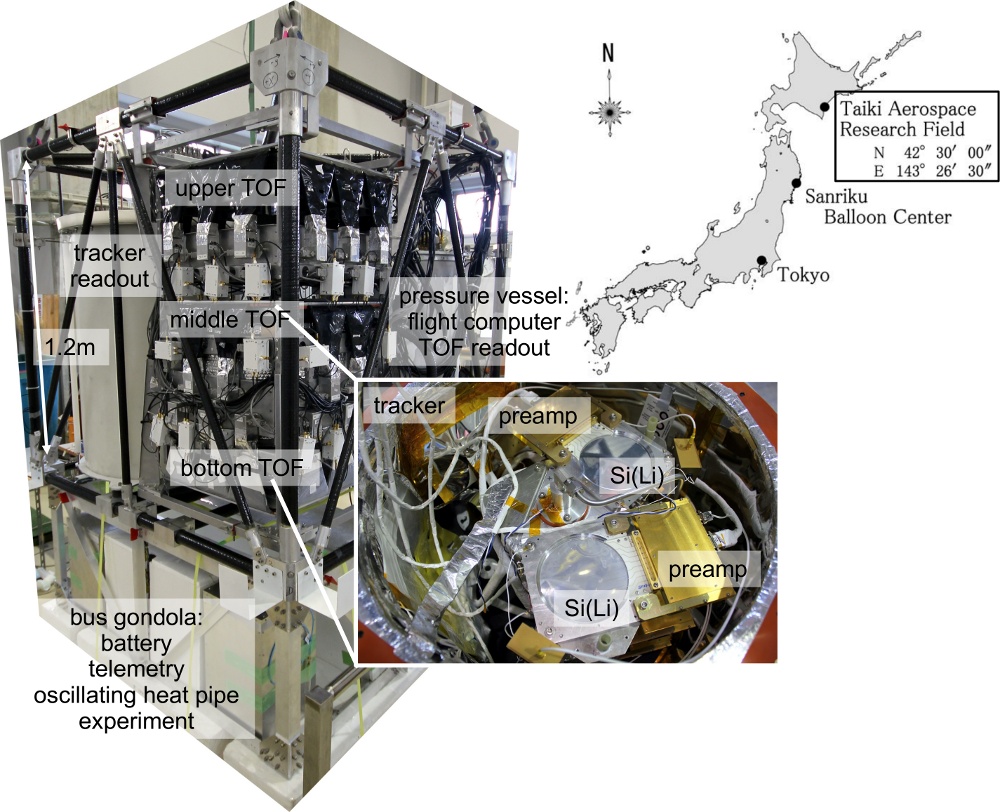The GAPS prototype (pGAPS) was integrated at the Space Sciences Lab at UC Berkeley. The integration was started in the summer of 2011 and the payload was shipped to Japan in April 2012 for the prototype flight from Taiki. The prototype consists of a two stacks of three Lithium doped Silicon detectors each. This part is called the tracker and is used to measure trajectories of charged particles and X-rays. Above the tracker two planes and below one plane of plastic scintillators with photomultiplier readout are mounted, called time of flight (TOF). This system is used to measure the energy depositions of charged particles, measure the flight time, and to generate a trigger for charged particles for the tracker. The flight on June 3rd 2012 from Taiki was successful and the data are currently analyzed. The key questions for the flight data analysis are:
- study the behavior of the Si(Li) tracker modules at float altitude and ambient pressure using an onboard X-ray tube and combined tracks in the tracker and TOF systems,
- study the Si(Li) cooling approach,
- and to measure the incoherent background level in a flight like configuration.
For photos of the integration process please click here and for the launch campaign in Japan here.
